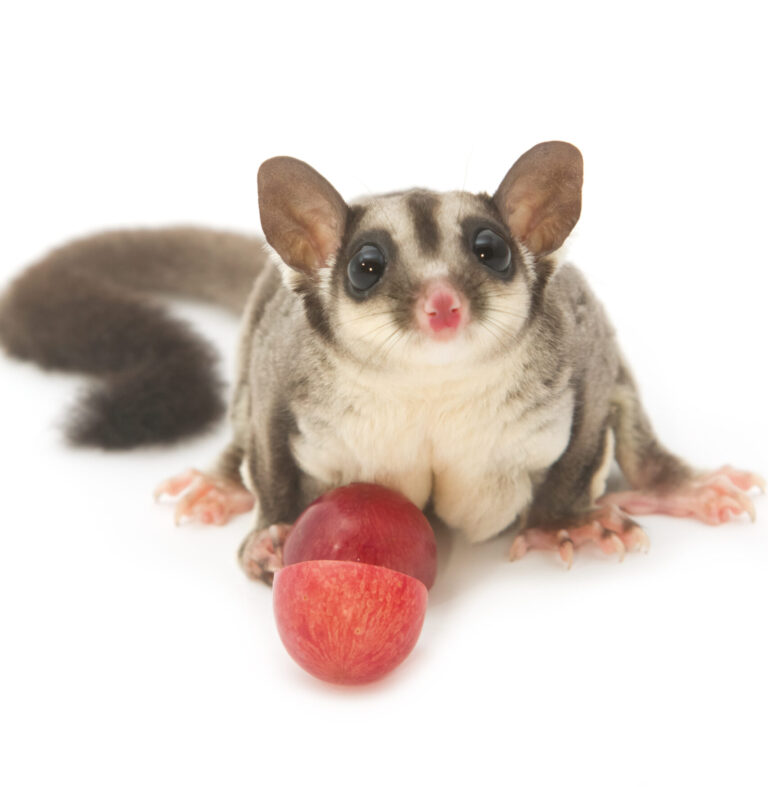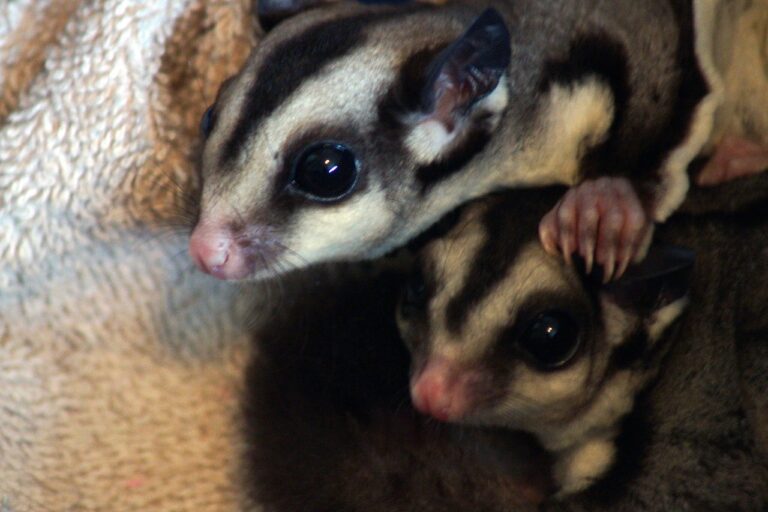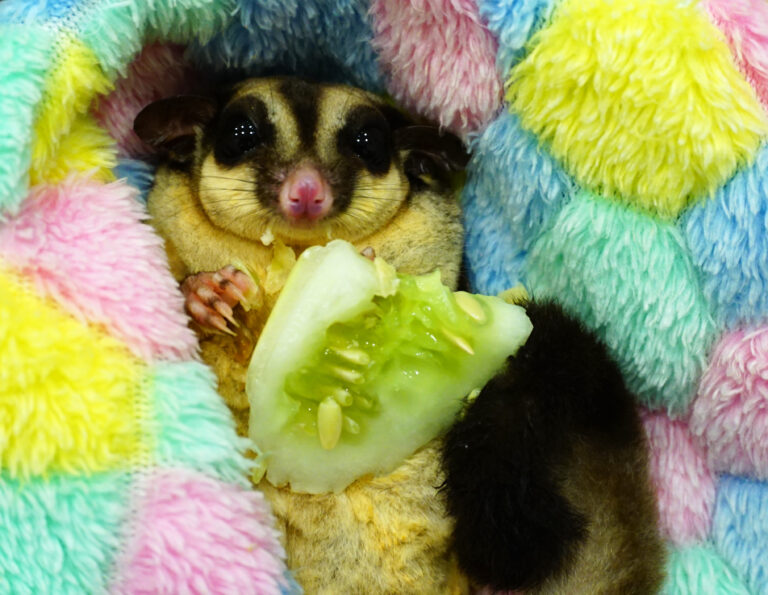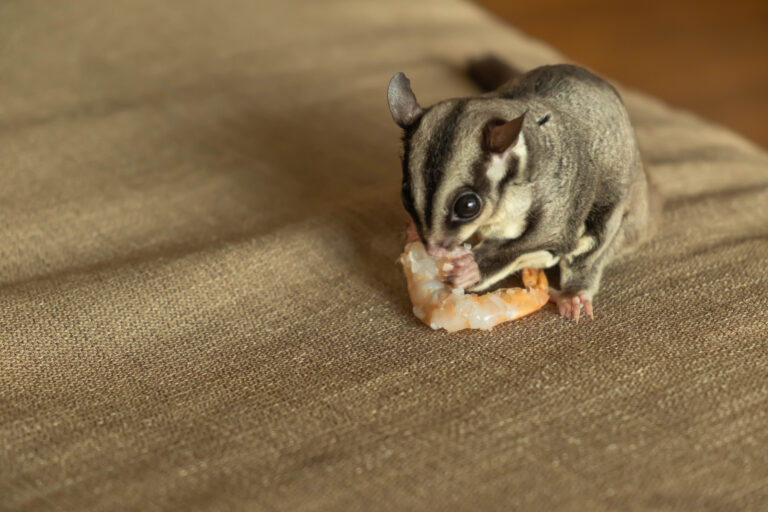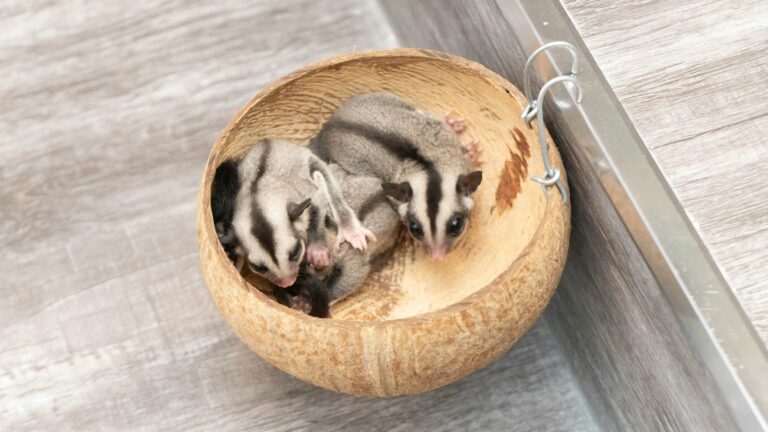A Beginner’s Guide to Sugar Gliders
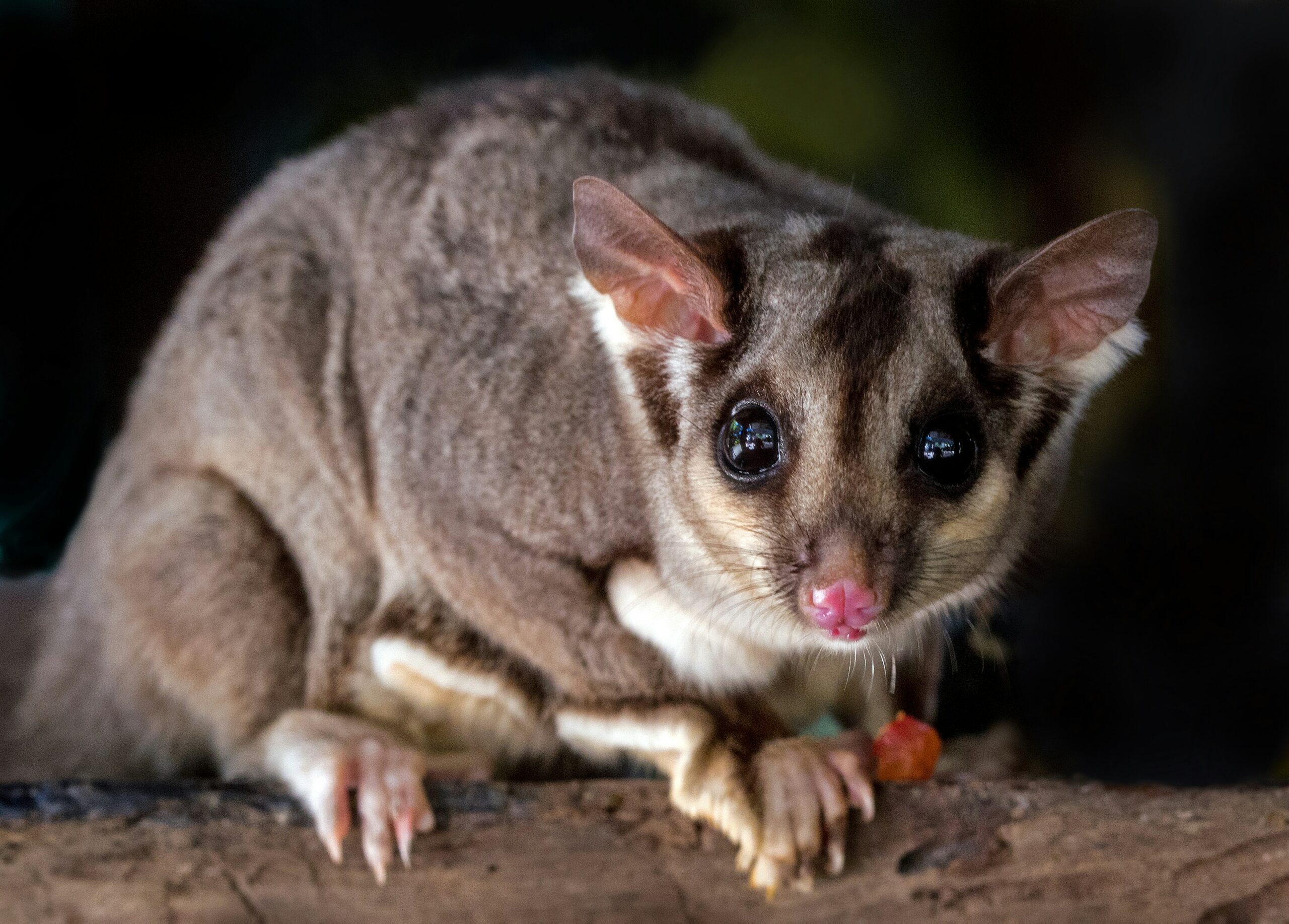
Sugar gliders, with their adorable appearance and endearing behaviors, have become increasingly popular as exotic pets! These small marsupials are known for their energetic personalities, nocturnal habits, and unique ability to glide through the air.
If you’re considering bringing a sugar glider into your home, it’s essential to understand their care requirements, behavior, and what it takes to provide them with a happy and healthy life.
In this beginner’s guide, we’ll cover everything you need to know to become a responsible sugar glider owner!
Understanding Sugar Gliders
Sugar gliders (Petaurus breviceps) are small, arboreal marsupials native to Australia, Indonesia, and Papua New Guinea. They are named for their love of sweet foods and their ability to glide through the air using a membrane called a patagium, which stretches between their front and hind legs. In the wild, sugar gliders live in colonies and are highly social animals, so it’s recommended to keep them in pairs or small groups to prevent loneliness and ensure their mental well-being.
Preparing for Your Sugar Glider
Before bringing a sugar glider home, it’s crucial to set up their habitat and gather the necessary supplies. Here’s what you’ll need:
A spacious cage: Opt for a large cage with plenty of vertical space for climbing and branches for perching. Make sure the spacing between bars is narrow enough to prevent escape.
Bedding: Choose a safe bedding material such as paper-based bedding or fleece liners that are easy to clean and won’t harm your glider if ingested.
Nutritious diet: Sugar gliders require a varied diet consisting of fruits, vegetables, proteins, and supplements. Commercially available diets specifically formulated for sugar gliders are available and can provide a balanced nutrition.
Toys and enrichment: Provide plenty of toys, branches, and climbing structures to keep your gliders mentally and physically stimulated. They enjoy pouches, wheels, ropes, and other interactive toys.
Safe gliding space: Create a safe area for your sugar gliders to glide and explore outside of their cage. Ensure the space is escape-proof and free of hazards.
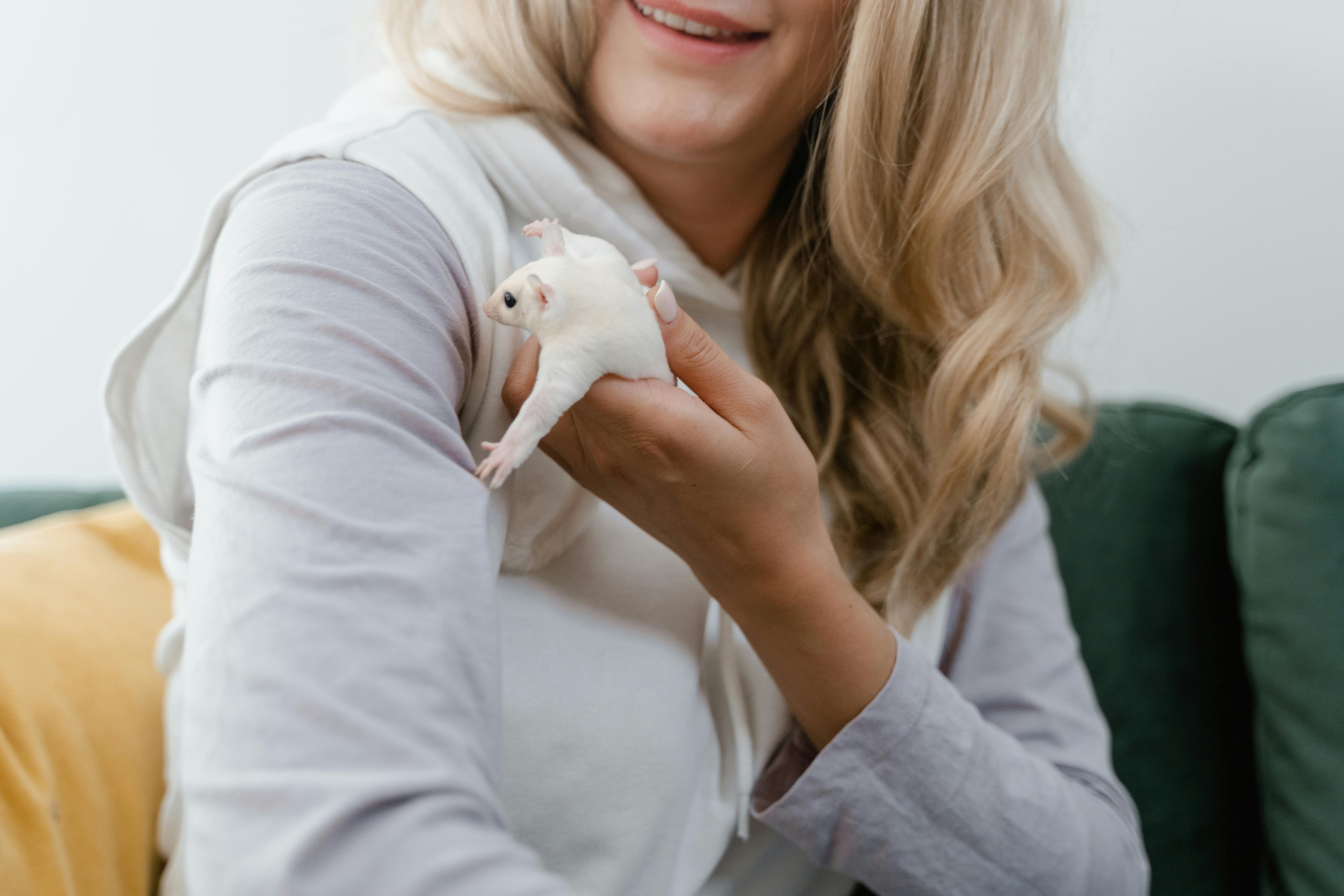
Diet and Nutrition
Proper nutrition is crucial for the health and well-being of sugar gliders. In the wild, they consume a diet consisting primarily of nectar, tree sap, insects, and fruits. To replicate their natural diet in captivity, you’ll need to provide a balanced mix of the following:
Pelleted food: Provide a high quality pelleted food for your sugar glider. This should make up about 75% of your sugar glider’s diet.
Fresh fruits: Offer a variety of fresh fruits such as apples, grapes, melons, and berries. Avoid citrus fruits and pits from fruits like cherries and peaches, as these can be harmful.
Vegetables: Include vegetables like leafy greens, carrots, cooked sweet potatoes, and bell peppers. Dark, leafy greens like kale and collard greens are particularly nutritious.
Proteins: Offer sources of animal protein such as cooked eggs, mealworms, crickets, and lean meats like chicken or turkey.
Supplements: Depending on the nutritional quality of your sugar glider’s pelleted food, you may need to consider providing a calcium supplement and a multivitamin powder. These can be sprinkled on their food a few times a week. It is important to keep in mind that high levels of calcium in your sugar glider’s diet might lead to urinary stones, so consult with your exotic veterinarian before adding supplements to their diet.
It’s essential to monitor your gliders’ diet and adjust accordingly based on their individual preferences and nutritional needs.
Ask for help: Consult with a veterinarian specializing in exotic animals when you first bring your sugar glider home about dietary recommendations for your new pet! What we know about the ideal diet for a sugar glider is evolving, so they might have the newest scoop on dietary recommendations!
Housing and Environment
Creating a suitable living environment is essential for the health and happiness of your sugar gliders. Here are some tips for setting up their habitat:
Cage setup: Place branches, ropes, and climbing structures inside the cage to encourage natural behaviors like climbing and jumping. Provide multiple nesting boxes or pouches for sleeping and hiding.
Temperature and humidity: Sugar gliders tolerate temperatures between 70°F to 90°F, but they do best when the temperature is 80°F to 88°F. Sugar gliders come from a very high humidity environment, higher than what is in many people’s homes. Try to keep a relative humidity of at least 50% to 70%. Avoid placing their cage in drafty or excessively humid areas.
Lighting: Sugar gliders are nocturnal animals and are sensitive to bright light. Provide a dimly lit environment during the day and consider using a red bulb for nighttime viewing.
Socialization: Spend time interacting with your sugar gliders daily to build trust and strengthen your bond. Allow them to explore outside of their cage in a safe, supervised environment.
Cleaning and hygiene: Clean your gliders’ cage regularly, removing soiled bedding and food debris. Wash their accessories and toys with mild soap and water to prevent the buildup of bacteria.
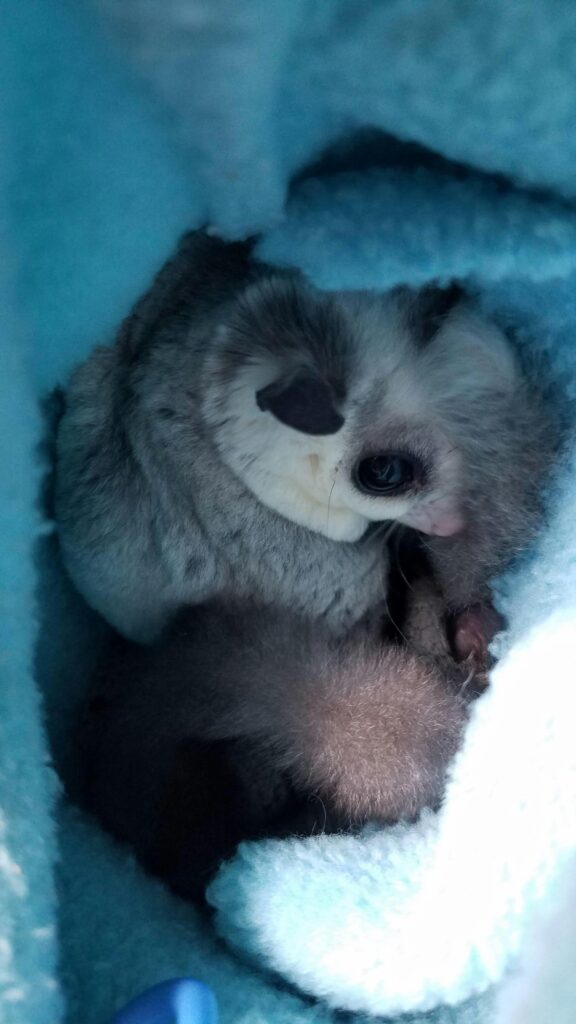
Bonding and Socialization
Building a strong bond with your sugar gliders is essential for their well-being and happiness. Here are some tips for bonding and socializing with your pets:
Start slowly: Allow your sugar gliders time to acclimate to their new environment before attempting to handle them. Spend time near their cage, talking to them softly and offering treats to gain their trust.
Hand feeding: Offer treats from your hand to encourage your gliders to associate your scent and presence with positive experiences.
Gentle handling: When your gliders are comfortable with your presence, begin gently handling them for short periods each day. Support their body and avoid grabbing or restraining them forcefully.
Respect their boundaries: Pay attention to your gliders’ body language and respect their boundaries. If they show signs of stress or discomfort, give them space and try again later.
Be patient: Building a bond with your sugar gliders takes time and patience. Every glider is unique, so it’s essential to work at their pace and provide plenty of love and attention along the way.
Common Health Issues
While sugar gliders are relatively hardy animals, they can still experience health problems, especially if their diet and environment are not adequately managed. Some common health issues in sugar gliders include:
Nutritional deficiencies: A diet lacking in essential nutrients can lead to issues like calcium deficiency, obesity, and metabolic bone disease.
Parasites: External parasites like mites and ticks can infest sugar gliders, causing skin irritation and discomfort. Regular grooming and preventive measures can help keep parasites at bay.
Infections: Bacterial, viral, and fungal infections can occur if your gliders’ habitat is not kept clean or if they are exposed to sick individuals. Prompt veterinary care is essential if you suspect your gliders are unwell.
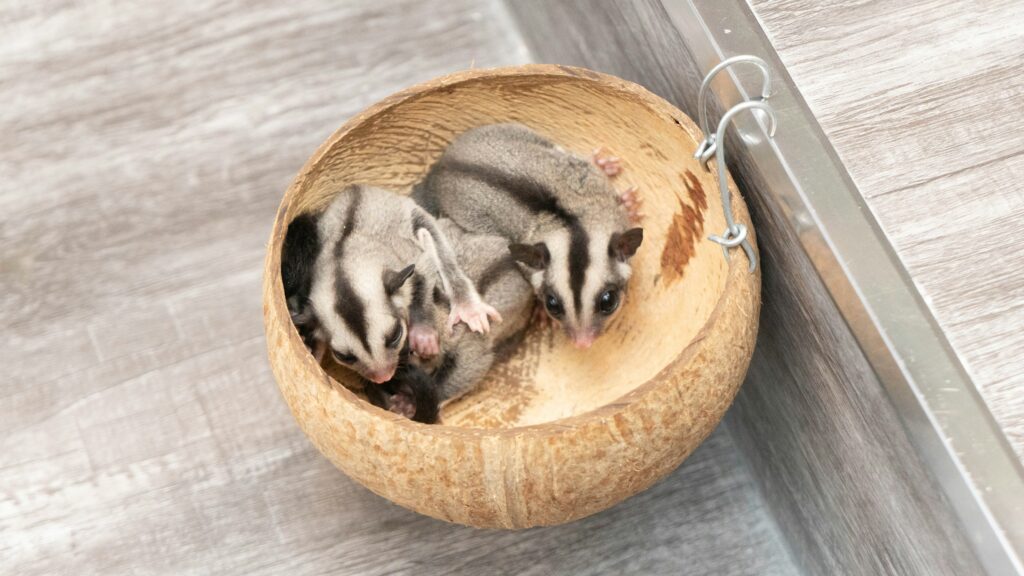
Finding a Veterinarian
Before bringing a sugar glider home, it’s essential to locate a qualified veterinarian with experience in exotic animal care. Not all veterinarians are familiar with sugar gliders, so do your research and find a professional who is knowledgeable about their unique needs. Schedule regular wellness exams for your gliders and seek veterinary attention promptly if you notice any signs of illness or injury.
Legal Considerations
Before acquiring a sugar glider, it’s essential to research the legal requirements and restrictions in your area. Some states and countries have regulations governing the ownership of exotic pets like sugar gliders, including permits, licenses, and restrictions on breeding and selling. Ensure that you understand and comply with these regulations to avoid any legal issues and ensure the welfare of your pets.
Breeding Considerations
Breeding sugar gliders should not be undertaken lightly. Responsible breeding requires a deep understanding of the species, careful genetic selection, and a commitment to providing proper care for the offspring. Before breeding your sugar gliders, consider the following:
Genetic health: Breeding animals should be free from genetic defects and health issues. It’s essential to research the lineage of potential breeding pairs and ensure they are not closely related to prevent inbreeding.
Parental care: Sugar gliders are devoted parents, and breeding pairs should be given adequate space, privacy, and resources to care for their young. Be prepared to provide additional support and veterinary care if needed.
Responsible ownership: Consider the ethical implications of breeding sugar gliders and the responsibility of finding suitable homes for the offspring. Avoid overbreeding and ensure that all prospective owners are educated about the care requirements of sugar gliders.
If you’re not prepared to take on the responsibility of breeding sugar gliders, consider spaying or neutering your pets to prevent unwanted joeys and contribute to population control efforts.

Conclusion
Bringing a sugar glider into your home can be a rewarding experience, but it’s essential to understand the commitment involved and provide proper care for these unique creatures!
By following the guidelines outlined in this beginner’s guide, you can create a loving and enriching environment for your sugar gliders and enjoy a fulfilling relationship with these fascinating animals.
Remember to always prioritize their health and well-being, seek veterinary care when needed, and continue to educate yourself about their care requirements. With dedication and patience, you can provide a happy and fulfilling life for your sugar gliders for years to come.

